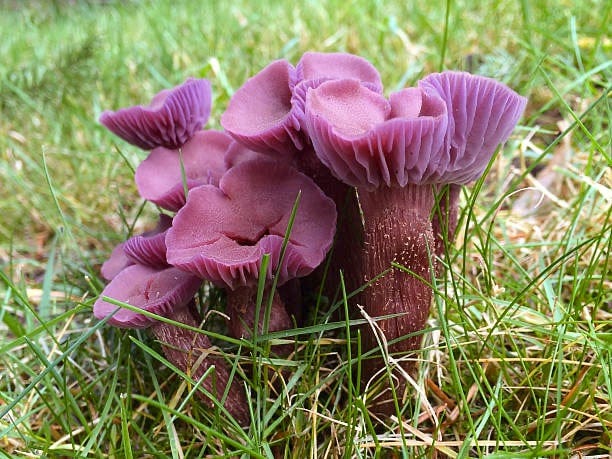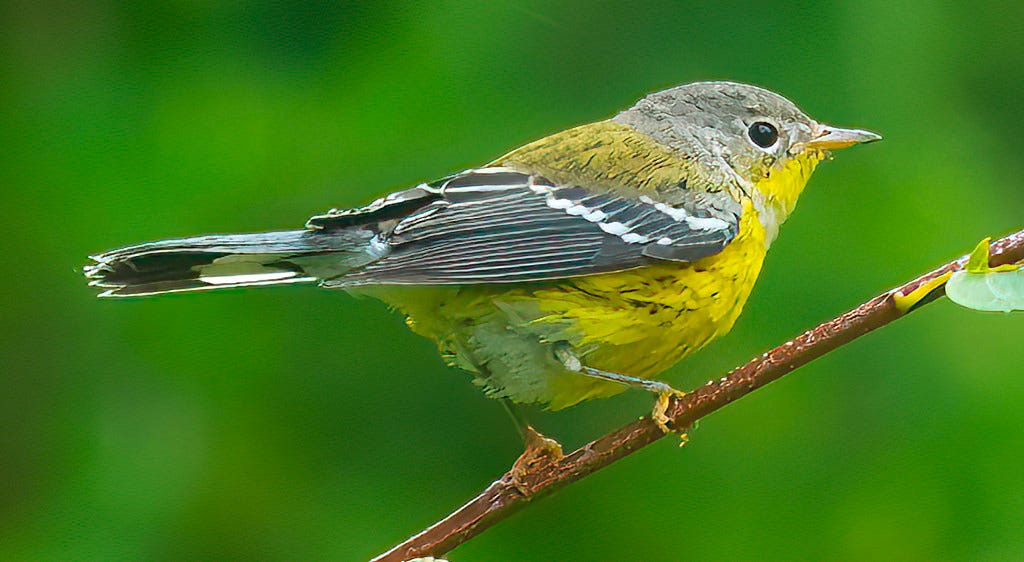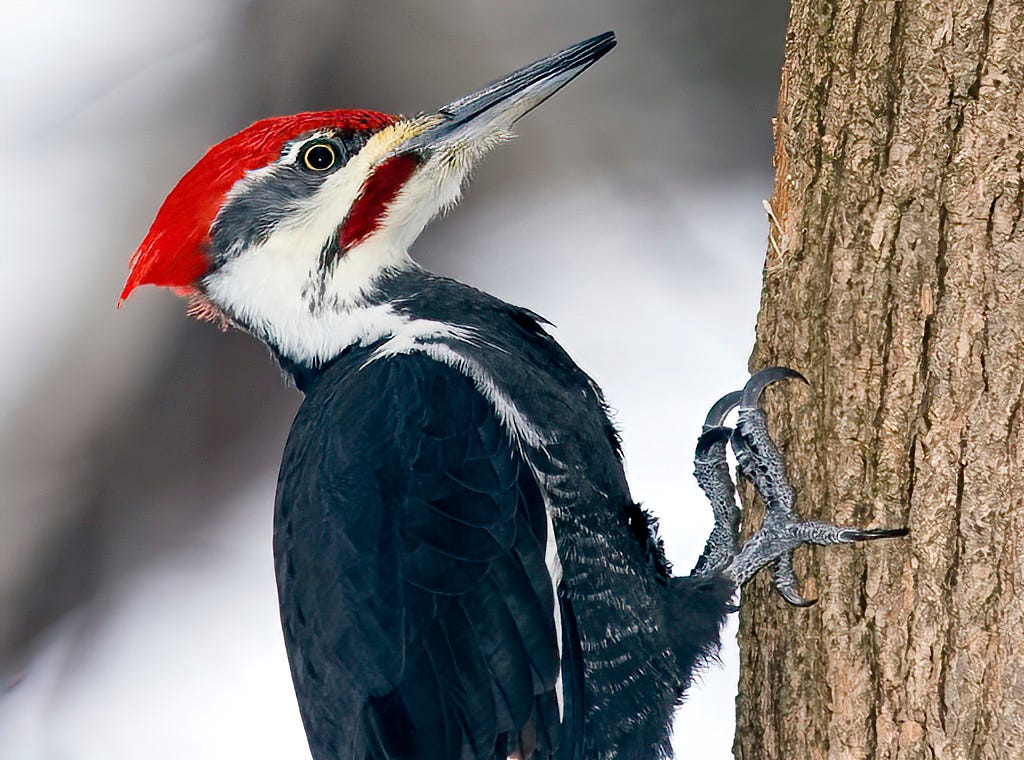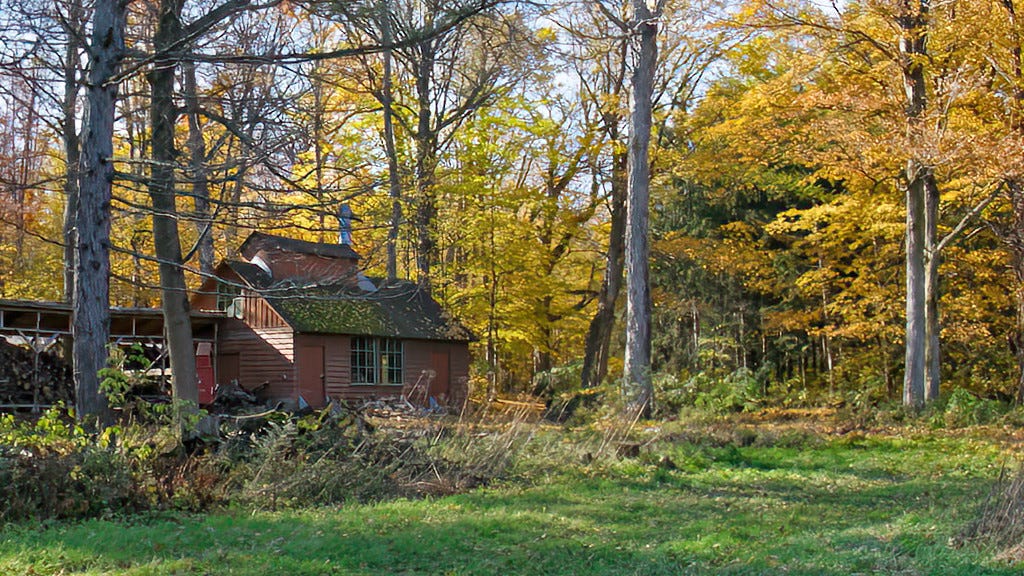INCLUDING:
Purple corpse fungi
Forests #1 and Forests #2
On non-native plants we are supposed to hate
Solvitur ambulando … "It is solved by walking"
Declining populations of insects
Starting with this, simply because it intrigues me:
Corpse Fungi
A couple of editions ago I shared a link to an article about a biologist who had published a study on fungi growing on the corpse of a dead beaver in an abandoned mine. This is niche science with a capital N, but fascinating for all that. I find fungi endlessly interesting but am the first to admit that this is a branch of biology that I have no specialist depth of knowledge about and so I was interested to read the following letter that appeared in the Globe & Mail earlier this week. This is good stuff.
Re “Inside a New Brunswick mine, a beaver’s cadaver sprouts new life” (July 1): Macabre mycologists need not confine their forays to the depths of old mines. In the 1989 book The Outer Shores, a delightful quartet of impassioned mycologists report that the carcass-strewn coasts of Haida Gwaii are a littoral lunch box for “corpse finder” fungal feasting.
Hebeloma and Lactarius mushrooms proliferate on Sitka deer carcasses, while the more omnivorous Onygena corvina generously degrades the feathers of bald eagle, rhinoceros auklet and blue heron corpses alike. Its epicure cousin Onygena equina is particularly partial to deer hooves.
Unlike sombre-clad humans at funerals, many of these mushrooms, such as the resplendently purple Laccaria amethysteo-occidentalis, sport bright colours. Others specialize on salmon remains brought into the woods by bears, passing on valuable nutrients from distant seas to awaiting masses of rootlets of nearby trees.
They are ecological assets.
Diligent browsing turned up a photo of the “resplendently purple” fungus mentioned above … apparently when fried the stems have a meaty texture and a taste reminiscent of bacon. Their real habitat is the floor of pine forests, it’s just that if dead meat happens to be around they have evolved the ability to ensure that it does not go to waste. (This has been a service to my readers).
Forests … #1
The link below is to an article entitled “The ‘wood wide web’ theory charmed us all – but now it’s the subject of a bitter fight among scientists” … I offer it to you as something worth thinking about, because there has been a bit too much “woo” and misunderstanding written on the subject in recent years.
… trouble arises when a scientific theory gains a life of its own, becoming culturally relevant in a way that ignores, simplifies, or contradicts the facts that birthed it.
The wood wide web is among many instances of scientific ideas going rogue.
Science thrives on debate. When people become wedded to a particular idea, that debate can get personal. Opponents are no longer challenging a hypothesis but a worldview, one that many people beyond science have become attached to. We owe it to the planet – and to each other – to stay open to the truth.
Forests … #2
Arboretum Birding

Time to return again to the Morgan Arboretum that I am fortunate to have just down the road. It’s owned by McGill University and sits on the western end of Montreal Island - with public access. Claimed to be the largest arboretum in Canada, which may or may not be true. If you are in the area it’s a must place to visit. Even if you are less than enthused by wildlife, it has some great trails to walk but don’t expect anything preened and primped like better known arboretums, this is much closer to natural forest than Westonbirt for example, or Guelph.
Over 200 species of birds have been seen at one time or another in the arboretum. Naturally, some of those are rare, some are flyovers and others are elusive at best - which makes the looking for them all the more fun. A few years ago I and the (then) resident Interpretative Naturalist at the arboretum entered into a low-key personal contest to see how many species could be observed without putting too much effort into the venture - in other words, we wanted to get an idea of how many species might the average visitor, not avid birders, expect to see during the course of an average year by just turning up in different seasons and walking the main trails with their eyes open. The answer came to 134 species. Not bad for a semi-urban forest this far north - keener birders can see more without too much trouble.
If you don’t know the place, check their website for access information:
On non-native plants we are supposed to hate
This is something I have noticed in my own garden. It doesn’t change the need for a much higher proportion of native plant species, but being too purist is not necessary either.
Solvitur ambulando … "It is solved by walking"
Putting words to long-standing practice
Just to spoil your day …
I was bemoaning the apparent shortage of insects this year - that’s a subjective observation, but then I read an article in the Guardian (for some reason the British media seem to be hotter on this subject than ours) and offer these selected extracts ...
1. Anyone with even a passing interest in the natural world will have noticed a dramatic phenomenon this year: a lack of insects. Perhaps most noticeable is the near-absence of butterflies. Species that are usually common, such as large and small whites, small tortoiseshells, gatekeepers, ringlets, peacocks and meadow browns, are in many places down to the point of having almost disappeared.
2. ... Dave Goulson, one of the UK’s leading entomologists, estimates that insect populations compared with a century ago are 90% to 95% down. That was not caused by one wet spring: it is the result of a combination of factors that include the rise of ever more intensive farming, habitat loss, habitat fragmentation, pollution and the impacts of climate breakdown.
3. We will need to go further, though, including shifting the culture that favours neat and tidy verges, edges and hedges to create wilder gardens and bigger, better and more connected natural habitats. And we need to reduce pesticide use more broadly – not only in farming but in gardens and parks. All that will be needed not only to stem long-term decline but to create the resilience that our wildlife at present lacks, and which will be needed more and more as climate breakdown leads to more extreme weather.











I won't be far away from the Morgan Arboretum when I travel from the UK to Canada next year. I'll try and fit it into my itinerary! Lovely post, Richard.